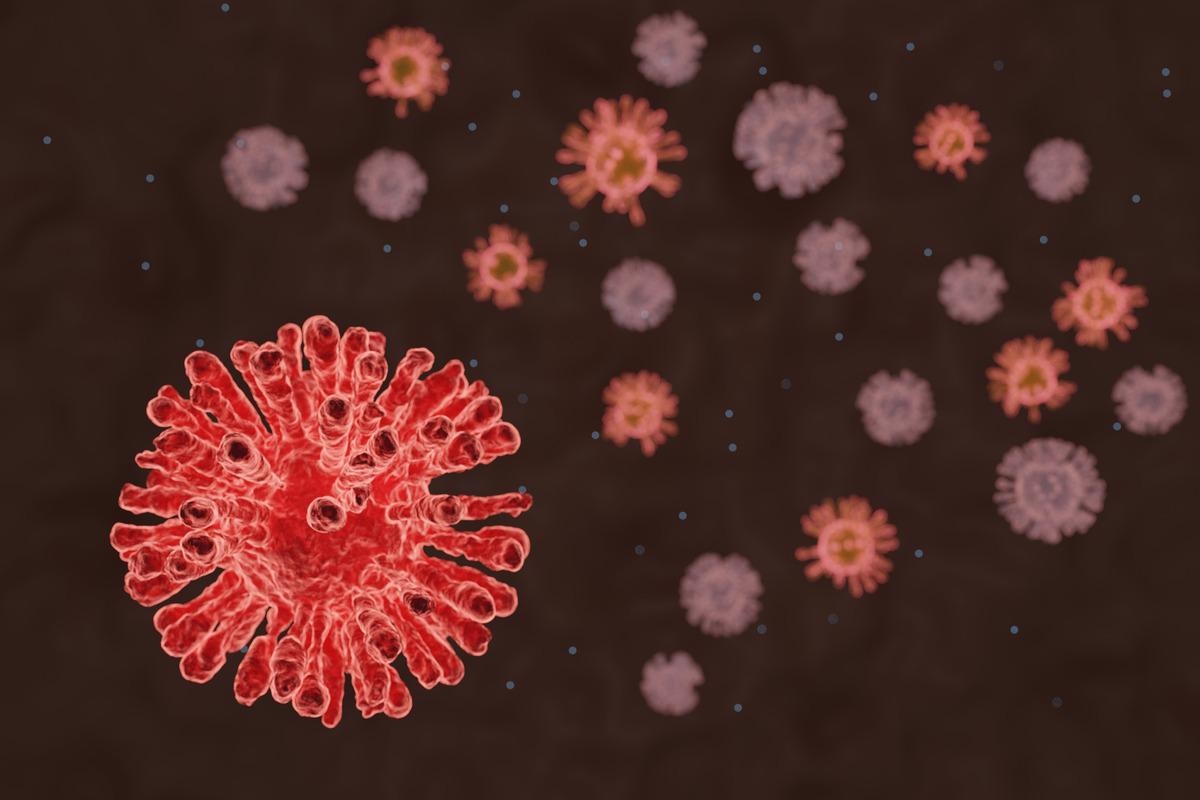Combined COVID-19 vaccination regimen found to induce more potent anti-SARS-CoV-2 antibodies

In a recent study posted to the bioRxiv* preprint server, researchers assessed vaccine-induced humoral responses against severe acute respiratory syndrome coronavirus 2 (SARS-CoV-2) post four different vaccination regimens comprising homologous and heterologous vaccine doses.

The coronavirus disease 2019 (COVID-19) pandemic has led to multinational efforts for SARS-CoV-2 vaccine development at a rapid pace which has resulted in diverse vaccination modalities, immunogenic combinations, and dose intervals for the existing SARS-CoV-2 vaccines.
About the study
In the present study, researchers compared the anti-SARS CoV-2 receptor-binding domain (RBD) immunoglobulin (IgG, IgA, and IgM) titers induced by double mRNA vaccination, double ChAdOx1 vaccination, single Ad26.COV2.S vaccination, or heterologous ChAdOx1 and mRNA vaccination.
Healthcare workers without prior COVID-19 history were grouped into four cohorts based on the vaccination regimens. The participants’ sera were collected one month and six months after the first vaccination. In addition, sera were collected one month after the second mRNA vaccination.
The neutralization potency of serum anti-SARS-CoV-2 RBD IgG titers was assessed using enzyme-linked immunosorbent assays (ELISA) whereas the breadth of SARS-CoV-2 Wuhan-Hu-1/wild-type (WT), Delta, and Omicron BA.1 neutralization was evaluated using human immunodeficiency virus-1 (HIV-1) pseudotyped with the corresponding SARS-CoV-2 strain spike (S) protein RBD, respectively.
Memory B lymphocytes expressing receptors binding to the SARS-CoV-2 S N-terminal domain (NTD) and RBD were analyzed to assess memory B lymphocyte development following vaccination. Further, the genes of Wuhan-Hu-1 RBD-specific B lymphocytes were sequenced and recombinant antibodies were produced in vitro to assess the SARS-CoV-2 specificity and neutralization after six months of the prime vaccination.
In addition, biolayer interferometry (BLI) analysis was performed to assess the binding affinities and to define the epitopes recognized by the vaccine-induced memory antibodies. Further, the structure or Wuhan-Hu-1 SARS-CoV-2 S bound to the AZ090 antibody was examined by cryo-electron microscopy (cryo-EM).
Results
After one month of prime AZ/AZ or AZ/BNT vaccination, the RBD-binding memory B lymphocyte count was substantially lower than that after Ad26.COV2.S and mRNA vaccination. However, the count improved after AZ/AZ or AZ/BNT boosts although the count was still lower than that observed after double mRNA vaccination. Contrastingly, the NTD-binding memory B lymphocyte count remained unaltered after the AZ/AZ or AZ/BNT boosts and was comparable to that induced by double mRNA vaccination but substantially lower than that by Ad26.COV2.S vaccination.
After four months of prime AZ/BNT vaccination, Delta and Omicron BA.1 neutralization titers were 5.5-fold and 11.6-fold lower than those against WT, respectively. The corresponding titers further decreased by 5.6-fold and 13.6-fold after six months of vaccination, respectively. In comparison, after four months of AZ/AZ prime vaccination, the corresponding titers decreased by 5.8-fold and 21-fold, respectively. Delta neutralization titers further decreased by 6.4-fold after six months of prime vaccination whereas Omicron BA.1 neutralization decreased slightly. Of note, the antibody titers among AZ/BNT vaccinees negatively correlated with the interval between the prime and boost doses, indicating increased COVID-19 protection by decreasing dosing intervals.
After six months of prime vaccination, AZ/BNT vaccinees demonstrated substantially higher SARS-CoV-2 WT neutralization compared to the AZ/AZ vaccinees and similar neutralization as the mRNA vaccinees. Ad26.COV2.S vaccinees demonstrated the least SARS-CoV-2 WT neutralization while AZ/AZ and AZ/BNT vaccinees demonstrated comparable IgA and IgM titers.
After a month of the second vaccination, mRNA and ChAdOx1 boosters increased the IgG titers by 2.6-fold and 12-fold among AZ/AZ and AZ/BNT vaccinees, respectively. The corresponding titers decreased by 1.5-fold and 3.2-fold after four to six months of vaccination, respectively. However, the titers remained substantially high among AZ/BNT vaccinees even after six months of prime vaccination. Notably, the second vaccination escalated the mean half-maximal neutralizing titers (NT50) among AZ/AZ vaccinees and AZ/BNT vaccinees from 139 to 305 and 1946, respectively.
A month after the vaccine boost, Omicron BA.1 neutralization by AZ/BNT vaccinees exceeded those by AZ/AZ and mRNA vaccinees by 6.4-fold and 10.3-fold, respectively. Omicron BA.1 neutralizing titers among AZ/BNT vaccinees remained higher even after six months of prime vaccination, whereas the neutralizing titers among Ad26.COV2.S vaccine recipients were much lower.
Clonal expansion of RBD-specific B lymphocytes after six months of prime vaccination represented 13%, 22%, 16%, and 23% of the memory B lymphocytes among Ad26.COV2.S, AZ/BNT, AZ/AZ, and mRNA vaccines, respectively. The VH3-53, VH3-30, and VH1-46 genes were highly expressed among AZ/AZ and AZ/BNT vaccinees. No differences were observed in the somatic mutations among AZ/AZ and AZ/BNT vaccinees. However, more mutations were noted in Ad26.COV2.S and mRNA vaccinees.
The mean half-maximal concentrations (EC50) of RBD-binding antibodies elicited by AZ/AZ vaccinees and AZ/BNT vaccines were similar. The binding affinities of antibodies induced by the mRNA, Ad26.COV2.S, AZ/AZ or AZ/BNT vaccines were also similar. However, the epitopes distributed in the memory antibody repertoires significantly differed between the vaccination regimens. The structural analyses showed that the AZ090 binding orientation was similar to that of previously described antibodies which were isolated after natural SARS-CoV-2 infection.
Overall, the study findings showed superior humoral immunity induced by heterologous AZ/BNT vaccination against SARS-CoV-2 strains. All vaccines were effective, although vaccine efficacy waned with time and could be enhanced by decreasing the interval between the prime and boost doses.
*Important notice
bioRxiv publishes preliminary scientific reports that are not peer-reviewed and, therefore, should not be regarded as conclusive, guide clinical practice/health-related behavior, or treated as established information.
- Zijun Wang, et al. (2022). Humoral immunity to SARS-CoV-2 elicited by combination COVID-19 vaccination regimens. bioRxiv. doi: https://doi.org/10.1101/2022.05.13.491823 https://www.biorxiv.org/content/10.1101/2022.05.13.491823v1
Posted in: Medical Science News | Medical Research News | Disease/Infection News
Tags: Antibodies, Antibody, B Lymphocyte, Coronavirus, Coronavirus Disease COVID-19, covid-19, Efficacy, Electron, Electron Microscopy, Enzyme, Genes, Healthcare, HIV, HIV-1, Homologous, immunity, Immunodeficiency, Immunoglobulin, in vitro, Lymphocyte, Microscopy, Omicron, Pandemic, Protein, Receptor, Respiratory, SARS, SARS-CoV-2, Severe Acute Respiratory, Severe Acute Respiratory Syndrome, Syndrome, Vaccine, Virus

Written by
Pooja Toshniwal Paharia
Dr. based clinical-radiological diagnosis and management of oral lesions and conditions and associated maxillofacial disorders.
Source: Read Full Article